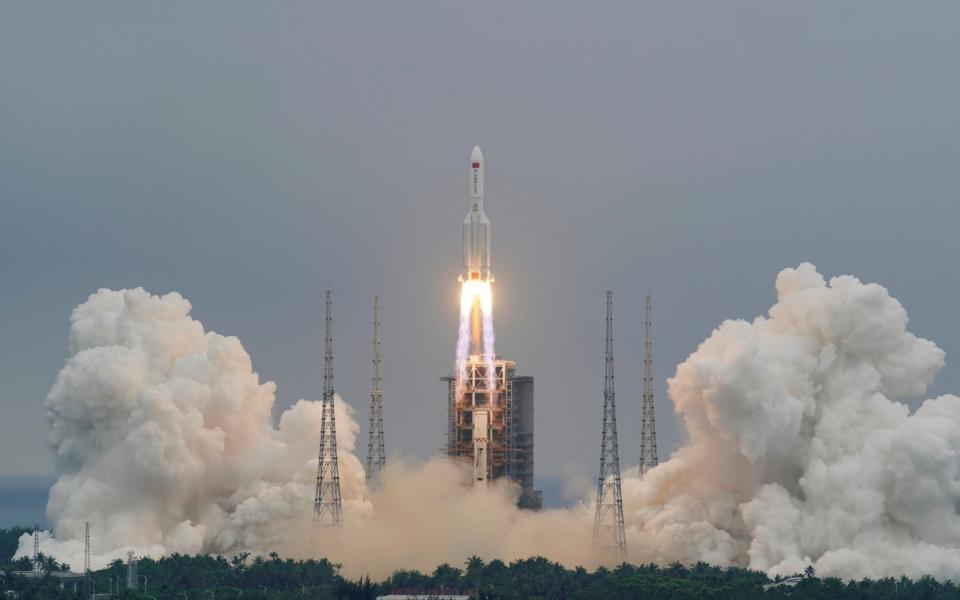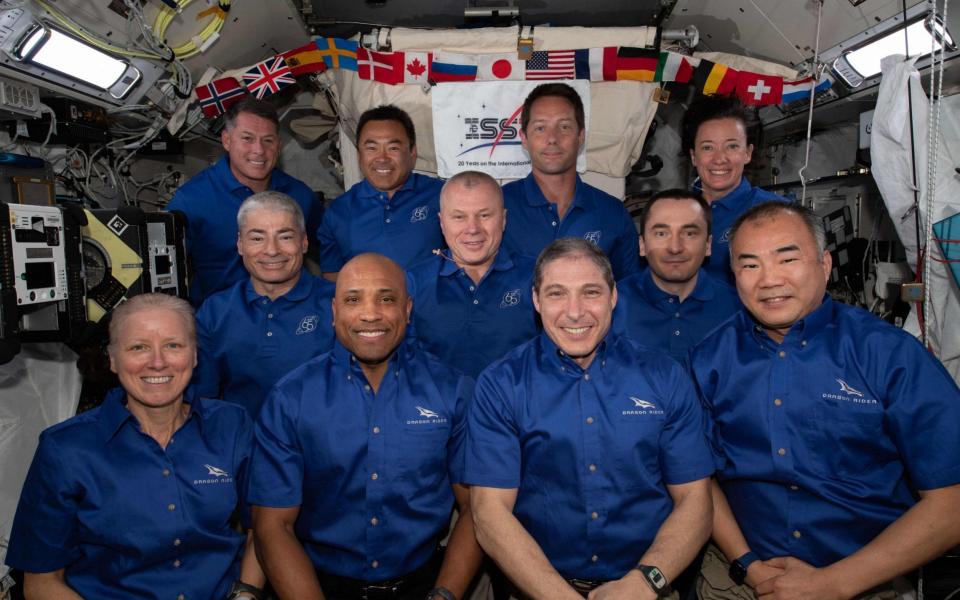Safety comes second in China's race for space

The remnants of China’s biggest rocket came crashing into the Indian Ocean just west of the Maldives archipelago a week ago on Sunday May 9.
It was, according to Harvard astrophysicist Jonathan McDowell, a “reckless” end to one of the largest uncontrolled re-entries of a spacecraft in history.
Most countries have tried to design their spacecraft to avoid such re-entries since large chunks of the Nasa space station Skylab fell from orbit and landed in Australia more than 40 years ago.
“It makes the Chinese rocket designers look lazy that they didn’t address this,” McDowell said after the crash last week.
While fears that the rocket parts would endanger life were averted, the event sparked fierce debate over China’s space programme and accusations of a disregard for safety.
“China is failing to meet responsible standards,” according to Bill Nelson, Nasa’s administrator.
It is the latest in a series of high-risk incidents out of China’s space programme, an outlier in the international space race that largely acts independently.
But despite being left out in the cold, China’s domestic space ambitions have not broken stride. On Friday, it succeeded for the first time in landing its Zhurong rover on the surface of Mars - a giant leap forward in its orbital kudos.
“China has gone its own way,” says Alexandra Stickings, a research fellow at the think-tank RUSI. But its goals are often tied in with China’s state apparatus.
“There is an ambition for China to become a global space power,” Stockings says. “Of course, in China, the line between civilian and military ambitions is not clear cut.”
Nasa is, in practical terms, banned from working with China following a 2011 law, known as the Wolf Amendment, designed to prevent technology transfer.
“Nasa has had ongoing restrictions in its annual appropriations, which preclude Nasa funding from being used for any bilateral policy, program, or contract with Chinese entities without first certifying the activity to Congress,” said a spokesman for the space agency said.
With tensions around technology transfer, cyber attacks and human rights abuses, a partnership with China seems unlikely.
But while the US is forced to treat China as a pariah, among astronauts and space experts, there are calls for President Biden to bring the Tiger back into the fold.
For Clayton Anderson, a former Nasa astronaut who has spent 166 days in orbit around the Earth, space is an opportunity to work collaboratively with international partners, even if they are not your traditional allies.

“They are Communists,” he says, “but I have been an advocate for years that we should pursue a relationship with China. Look at our history with Russia. There were rules against us working with Russia, but now our relationship is eons better than it was during the Cold War.”
After the collapse of the Soviet Union, the US and Russian space agencies agreed to a partnership that would have seemed impossible just a few years earlier.
In 1992, after a meeting between George H W Bush and Boris Yeltsin, it was agreed that the two rivals should cooperate on orbit. This first saw collaboration on the Mir space station, a Russian orbiter that also housed US astronauts, and a few years later on the International Space Station.
While relations between Russia and the US have ebbed and flowed, and even broken down entirely in the realm of cyberspace and hacking, Nasa and Roscosmos have continued to collaborate.
But with the International Space Station nearing the end of its useful life, Russia is looking further afield to China- and there is a case the US should do the same.
Even as it has been kept out in the cold, China’s space programme has accelerated. Its engineers launched the first part of what will become a Chinese space station into orbit late last month. President Xi Xingping called on them to carry out the operation with the “spirit of two bombs and a satellite”, a reference to its Cold War nuclear programme.
Experts warn that US policy of exclusion under the 2011 Wolf Amendment has backfired. The policy “more often than not ends up harming the US space industry, while doing little to impede China’s progress in space,” says Peter Martinez of the Secure World Foundation, which advocates for peaceful use of Earth’s orbit.
China’s actions have also been increasingly hard for the West to reconcile with. In 2007, it tested a weapon to destroy satellites, a “kinetic kill vehicle” travelling at 18,000 miles per hour that smashed one of its probes from orbit. A Pentagon report released last year said China “intends to pursue additional anti satellite weapons” despite a pretence of peaceful expansion.
But some Biden officials are less hawkish on China. Pamela Melroy, who has been nominated as Nasa’s deputy administrator, told Politico late last year that excluding China was “a failing strategy”. Charles Bolden, a former Nasa administrator, told the website that allowing China to independently build a space station was “short sighted”.
Efforts to delay China by keeping it out of international efforts have largely failed. In 2018, it launched a rover to the dark side of the moon for the first time. It has also launched a rival to GPS, its Beidu network. It has state-backed plans to build a 13,000 strong satellite constellation to rival Starlink.
But many space experts are not optimistic that China can be reined in, even if the US wanted to.
Rob Meyerson, a former Nasa engineer and the former president of Jeff Bezos’s Blue Origin rocket company, says: “We generally think of space as a designation for science and exploration. The Chinese look at it for economic gain.”
He adds that China appears to have a disregard for space safety. “We have a common sense standard to avoid collisions. Control re-entries so you don’t come down on populated areas and damage property - or worse kill people. Based on what happened last week, it is clear that is not a priority in the Chinese programme.”
In Europe, relations with China are better. Karl Bergquist, a spokesman for the European Space Agency (Esa), says: “We have long standing cooperation with China in space and earth sciences.” Esa has collaborated on several scientific missions, including working with China’s space academy and on plans to study solar winds.
The agency has even publicly stated its aim to send astronauts up to China’s planned space station, although it is understood that those plans have not advanced as quickly as originally hoped.
While China has made rapid gains in space, one area it lags behind is in commercial investment. Private investment in China’s space sector in 2020 was just $933m, according to Chinese publication Future Aerospace. That compares to $1.2bn raised by Elon Musk’s SpaceX in the first three months of 2021 alone. According to a report from Bryce Space, US space start-ups raised $4.9bn in 2019.
According to Anderson, the safest thing to do would be to foster ties with China. “Maybe I am just a small town kid from the midwest, but it seems to me this is something we could do,” he says.
It may not matter. With or without Nasa, the speed of Beijing’s advance into space is now well beyond escape velocity.
